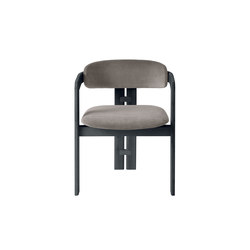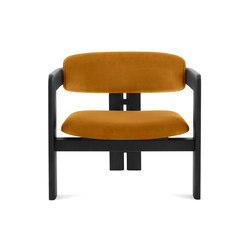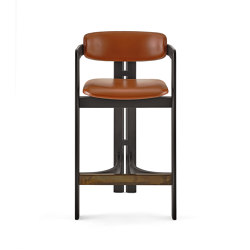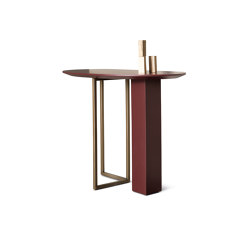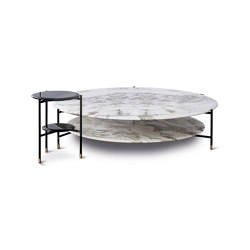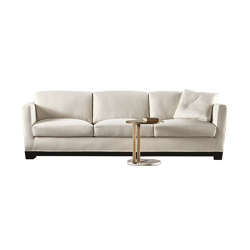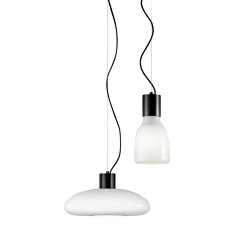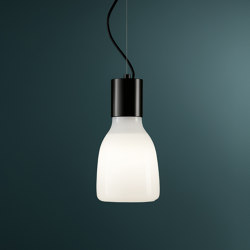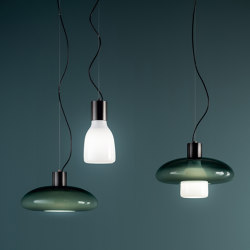This brand has been permanently removed. Information is no longer up to date.
About Erik Jørgensen
SHOW LESS
Erik Jørgensen was a trained upholsterer. In 1954, he founded a small workshop in the Danish town of Svendborg, where his expertise as an upholsterer was in high demand from the local community. In the 1960s and 1970s, he developed a small sofa collection with craftsmanship, quality and aesthetics as top priorities. Today, this second-generation family-owned company continues to be known for its high quality and upholstery expertise.
Erik Jørgensen worked with the esteemed designer Poul M. Volther in the 1960s and with Hans J. Wegner in the 1980s. In 1964, after Poul M. Volther had designed the Corona chair, Erik Jørgensen and Volther met at a furniture fair in Fredericia. Erik Jørgensen saw the unique qualities of the Corona chair with its beautiful expression and detailing and put it into production, initially with a wooden frame and later with a metal frame.
In 1988, Erik Jørgensen was contacted by Hans J. Wegner, who had designed the Oxchair in 1960. The Oxchair is one of the most challenging chairs to upholster, and that is exactly why Wegner came to Erik Jørgensen. With his upholstery expertise, Erik Jørgensen was able to produce the chair, and it was launched in 1989 at the international furniture fair in Milan. In 1960, Wegner designed a feminine counterpart to the Oxchair, the Queen chair, which went into production in 2010.

In the 1980s, Erik Jørgensen was one of the first to enter the contract market. This was a brand-new market with a big and exciting potential. In cooperation with Johannes Foersom and Peter Hiort-Lorenzen, Erik Jørgensen launched Rotor in 1983 and Pipeline in 1984. Both were ground-breaking for their time with their unique expression and technology. This marked the beginning of a very fruitful collaboration with the talented design duo, who have since designed a wide range of furniture for Erik Jørgensen.
In the late 1990s, the company returned its focus to private homes, and the classic EJ 315 sofa, designed by Erik Ole Jørgensen in 1975, found a large and receptive audience. The following years saw the launch of many furniture designs intended for home interior design, including the modern Delphi sofa, designed by the Swiss designer Hannes Wettstein.
When Erik Jørgensen passed away in 1998, his sons Niels and Ole Jørgensen took over the company.
From 2000, new design partnerships became an important part of Erik Jørgensen’s DNA, and that has continued to this day, with a line-up of young designers that includes Louise Campbell, Tine Mouritsen, GamFratesi, Andersson & Voll and Anne Lorenzen.
At Erik Jørgensen, we strive to create furniture that lasts. Not just in terms of holding up to everyday use but also in its continued ability to enhance our surroundings and open our eyes to new ways of seeing and producing furniture. This passion for design and quality craftsmanship is characteristic of Erik Jørgensen.
Erik Jørgensen was a trained upholsterer. In 1954, he founded a small workshop in the Danish town of Svendborg, where his expertise as an upholsterer was in high demand from the local community. In the 1960s and 1970s, he developed a small sofa collection with craftsmanship, quality and aesthetics as top priorities. Today, this second-generation family-owned company continues to be known for its high quality and upholstery expertise.
Erik Jørgensen worked with the esteemed designer Poul M. Volther in the 1960s and with Hans J. Wegner in the 1980s. In 1964, after Poul M. Volther had designed the Corona chair, Erik Jørgensen and Volther met at a furniture fair in Fredericia. Erik Jørgensen saw the unique qualities of the Corona chair with its beautiful expression and detailing and put it into production, initially with a wooden frame and later with a metal frame.
In 1988, Erik Jørgensen was contacted by Hans J. Wegner, who had designed the Oxchair in 1960. The Oxchair is one of the most challenging chairs to upholster, and that is exactly why Wegner came to Erik Jørgensen. With his upholstery expertise, Erik Jørgensen was able to produce the chair, and it was launched in 1989 at the international furniture fair in Milan. In 1960, Wegner designed a feminine counterpart to the Oxchair, the Queen chair, which went into production in 2010.

In the 1980s, Erik Jørgensen was one of the first to enter the contract market. This was a brand-new market with a big and exciting potential. In cooperation with Johannes Foersom and Peter Hiort-Lorenzen, Erik Jørgensen launched Rotor in 1983 and Pipeline in 1984. Both were ground-breaking for their time with their unique expression and technology. This marked the beginning of a very fruitful collaboration with the talented design duo, who have since designed a wide range of furniture for Erik Jørgensen.
In the late 1990s, the company returned its focus to private homes, and the classic EJ 315 sofa, designed by Erik Ole Jørgensen in 1975, found a large and receptive audience. The following years saw the launch of many furniture designs intended for home interior design, including the modern Delphi sofa, designed by the Swiss designer Hannes Wettstein.
When Erik Jørgensen passed away in 1998, his sons Niels and Ole Jørgensen took over the company.
From 2000, new design partnerships became an important part of Erik Jørgensen’s DNA, and that has continued to this day, with a line-up of young designers that includes Louise Campbell, Tine Mouritsen, GamFratesi, Andersson & Voll and Anne Lorenzen.
At Erik Jørgensen, we strive to create furniture that lasts. Not just in terms of holding up to everyday use but also in its continued ability to enhance our surroundings and open our eyes to new ways of seeing and producing furniture. This passion for design and quality craftsmanship is characteristic of Erik Jørgensen.
SHOW LESS

